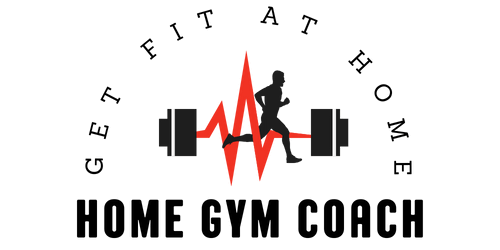Are you tired of heading to the gym every day, navigating through crowded spaces, and waiting for equipment to become available? If so, it’s time to consider creating your own home gym. In this article, we will explore the ideal layout and organization for your home gym. From choosing the right space to selecting the essential equipment, we will guide you through the process of transforming your spare room or basement into a convenient and efficient gym that suits your fitness needs. Say goodbye to long commutes and hello to a personalized workout haven right at your fingertips.

Designing the Ideal Home Gym Layout
Designing the ideal home gym layout begins with assessing the available space and determining your fitness goals. By considering these factors, you can choose the right equipment and implement safety measures to ensure an efficient and effective workout experience. Additionally, organizing your home gym efficiently, optimizing the flow and functionality, choosing the right flooring, and creating an inspiring atmosphere are essential elements to create a space that motivates and encourages regular exercise. Setting up an efficient storage system, maintaining safety and organization, creating a technology-friendly environment, and seeking professional advice and guidance are also crucial aspects to consider when designing your ideal home gym layout.
Assessing the Available Space
Before diving into designing your home gym, it is important to assess the available space in your house. Whether you have a dedicated room, basement, garage, or limited area in a small apartment, understanding the dimensions and limitations will help you make the most of the available space. Consider factors such as ceiling height, natural light availability, and electrical outlets when deciding on the location for your home gym.
Determining the Fitness Goals
Once you have assessed the available space, it is crucial to determine your fitness goals. Are you looking to build strength, improve cardiovascular health, or focus on flexibility and mobility? Knowing your fitness goals will guide you in choosing the appropriate equipment and designing the layout accordingly. It’s important to have a clear understanding of your goals to ensure your home gym layout can support your fitness journey effectively.
Choosing the Right Equipment
Choosing the right equipment is a crucial step in designing the ideal home gym layout. With numerous options available, it’s important to invest in equipment that aligns with your fitness goals and fits well within the available space. Consider versatile equipment such as adjustable dumbbells, resistance bands, and stability balls that can provide a wide range of exercises without taking up excessive space. Additionally, cardio equipment like treadmills, stationary bikes, or rowing machines are excellent additions to any home gym layout.
Considering Safety Measures
Safety should never be compromised when designing a home gym layout. Implementing safety measures is essential to prevent injuries and accidents. Ensure there is adequate space surrounding the equipment to perform exercises safely and comfortably. Install proper flooring to minimize the risk of slips or falls, and consider adding safety features like handrails or padding for equipment. It is also essential to have clear visibility and ample lighting in your home gym to prevent any mishaps during workouts.
Organizing Your Home Gym Efficiently
Once you have determined the layout of your home gym, it’s important to organize it efficiently to make the most of the space available. This includes creating dedicated zones for different activities, prioritizing accessibility and convenience, implementing storage solutions, and maintaining a clean and tidy space.
Creating Zones for Different Activities
To maximize the functionality of your home gym, consider dividing the space into different zones for different activities. This could include a cardio zone with cardio equipment, a strength training zone with weights and resistance machines, and a stretching or yoga zone. By creating designated areas, you can enhance the efficiency and flow of your workouts, making it easier to transition between exercises without any disruption.
Prioritizing Accessibility and Convenience
When organizing your home gym, prioritize accessibility and convenience. Arrange your equipment in a way that allows for easy access and ensures a seamless workout experience. Place frequently used equipment within easy reach, and arrange heavier or less frequently used equipment towards the back or corners of the space. Additionally, ensure there is enough space for movement and proper spacing between equipment to avoid any accidents or injuries.
Implementing Storage Solutions
Storage solutions are crucial to keep your home gym organized and clutter-free. Invest in storage racks and shelves to neatly store weights, resistance bands, and other smaller equipment. Utilize vertical space by installing overhead storage or wall-mounted shelves to optimize the use of the available area. Having a dedicated storage system will not only keep your equipment organized but also make it easier to maintain cleanliness and prevent any tripping hazards.
Maintaining a Clean and Tidy Space
A clean and tidy home gym is not only aesthetically pleasing but also important for the overall safety and functionality of your workouts. Regularly clean and disinfect your equipment to maintain hygiene and prevent the spread of bacteria. Keep cleaning supplies within reach to encourage regular maintenance. Additionally, organize cables and cords to avoid any trip hazards and periodically assess the layout to ensure everything is in its designated place.

Layout Ideas for Different Home Gym Spaces
The layout of your home gym will vary depending on the available space. Here are some layout ideas for different types of home gym spaces:
Dedicated Room or Basement
If you have a dedicated room or a basement for your home gym, you have the luxury of ample space. Consider dividing the area into different zones, with a dedicated cardio section, strength training area, and a designated space for stretching or yoga. Install full-length mirrors on one wall to check your form and create an illusion of a larger space. Invest in adjustable lighting fixtures or natural light sources to create a bright and energizing environment.
Garage or Outdoor Space
For those utilizing a garage or outdoor space for their home gym, ensure the area is properly insulated to withstand different weather conditions. Install rubber flooring or protective mats to provide cushioning and shock absorption. Utilize walls or ceiling space for storage racks or wall-mounted shelves to keep the area organized. Consider installing fans or proper ventilation to maintain a comfortable temperature during workouts.
Small Apartments or Limited Areas
In small apartments or limited areas, optimizing space is key. Foldable or compact equipment, such as foldable treadmills or resistance bands, can be easily stored and used when needed. Utilize walls for storage by installing wall-mounted racks or shelves for weights or smaller equipment. Consider utilizing furniture that serves dual purposes, such as an exercise ball that can double as a chair. By maximizing vertical and hidden storage, you can create a functional gym space even in limited areas.
Optimizing the Flow and Functionality
To optimize the flow and functionality of your home gym, consider the arrangement of equipment, lighting, ventilation, and the placement of mirrors and entertainment elements.
Arranging Equipment for Easy Workout Flow
To ensure a smooth and efficient workout flow, arrange your equipment strategically. Start by grouping similar equipment together, such as placing dumbbells and barbells in one area and cardio equipment in another. Place equipment with higher usage frequency closer to the entrance or within easy reach. Keep stretching or yoga areas separate from heavy equipment to create a calm and distraction-free zone. The key is to organize the layout in a way that minimizes transitions between exercises and maximizes the effectiveness of your workouts.
Focusing on Proper Lighting and Ventilation
Proper lighting and ventilation are essential for creating a comfortable and inviting home gym environment. Natural light is ideal, as it helps boost mood and energy levels. If natural light is limited, invest in adjustable lighting fixtures to create a well-lit space. Additionally, ensure proper ventilation to maintain air quality and regulate temperature during workouts. Consider installing fans or air purifiers to keep the air fresh and circulating.
Strategically Placing Mirrors and Entertainment
Mirrors are a great addition to any home gym as they help with form and technique during exercises. Install full-length mirrors or place them strategically to provide a clear view of your movements. Mirrors also add a sense of space and brightness to the room. Additionally, consider incorporating entertainment elements such as a television, music system, or a tablet stand for online workout programs to keep you motivated and engaged during your workouts.

Choosing the Right Flooring
The flooring of your home gym is essential for comfort, safety, and noise reduction. When choosing the right flooring, consider factors such as durability, shock absorption, noise reduction, and ease of cleaning.
Selecting Durable and Shock-Absorbing Material
When it comes to home gym flooring, durability is key. Opt for materials that can withstand the weight and impact of exercise equipment, such as rubber or vinyl flooring. These materials offer excellent shock absorption, reducing the risk of injuries and protecting your floors from damage. Additionally, they provide a cushioned surface that is gentle on joints and muscles during high-impact workouts.
Considering Noise Reduction and Easy Cleanup
Home gyms can produce noise, especially when using heavy weights or cardio equipment. Choosing flooring that has noise reduction properties, such as rubberized tiles or mats, can help minimize the impact of noise on the rest of the house or neighboring apartments. Moreover, ensure the flooring is easy to clean and maintain. Sweating during workouts is common, so opt for materials that are resistant to moisture and can be easily wiped or mopped clean.
Exploring Different Flooring Options
There are various flooring options available for home gyms, so consider your preferences and budget when making a selection. Aside from rubber and vinyl, other options include foam mats, carpet tiles, or even hardwood flooring with protective pads. Each option has its benefits, so research and explore what will best suit your needs in terms of durability, aesthetics, and functionality.
Creating an Inspiring Atmosphere
Designing a home gym that inspires and motivates you is essential for staying consistent with your workouts. Consider the following elements to create an inspiring atmosphere in your home gym:
Choosing a Motivating Color Scheme
Colors have a significant impact on mood and energy levels. Choose a motivating color scheme that is both visually appealing and energizing. Opt for vibrant colors like red or orange to boost energy and enthusiasm, or go for calming blues and greens for a more serene and peaceful atmosphere. Combining colors that resonate with your personality and fitness goals will help create an environment that encourages you to push through your workouts.
Decorating with Inspirational Quotes or Graphics
Incorporating inspirational quotes or graphics on the walls of your home gym can provide daily motivation. Find quotes that resonate with your fitness journey and display them prominently. Use wall decals or framed prints to add a personal touch and create a positive and encouraging atmosphere within your workout space.
Adding Personal Touches and Motivational Elements
Adding personal touches and motivational elements to your home gym can enhance your workout experience. Display photos of your role models or fitness achievements to inspire you. Hang up your favorite sports jerseys or trophies to create a sense of accomplishment and pride. By surrounding yourself with elements that have personal significance, you can create a space that truly reflects your fitness aspirations and keeps you motivated to achieve your goals.
Setting Up an Efficient Storage System
To maintain an organized and clutter-free home gym, setting up an efficient storage system is crucial. By properly storing your equipment, you can maximize space and prevent any safety hazards.
Investing in Storage Racks and Shelves
Investing in storage racks and shelves is essential for keeping your home gym tidy. Choose sturdy and adjustable storage racks to accommodate different sizes of equipment and weights. Wall-mounted shelves are also a great option for storing smaller items like resistance bands, yoga mats, or towels. Having designated spaces to store your equipment will not only make it easier to find what you need but also help prevent any accidents due to equipment lying around.
Utilizing Vertical Space
Make the most of vertical space by utilizing overhead storage or wall-mounted racks. This ensures that equipment is easily accessible while keeping the floor area clutter-free. Install hooks or wall-mounted racks to hang resistance bands or jump ropes. Utilize vertical storage for yoga mats, foam rollers, or other workout accessories. By utilizing vertical space, you can effectively maximize the available area in your home gym.
Storing Equipment Based on Frequency of Use
Prioritize the organization of your equipment based on frequency of use. Keep frequently used items within easy reach, and store less frequently used equipment towards the back or higher shelves. This will streamline your workouts, making it easier to find what you need without wasting time searching for equipment. Storing items based on frequency of use also helps maintain a clean and uncluttered space.
Maintaining Safety and Organization
Maintaining safety and organization is crucial for a successful home gym experience. By implementing safety rules and guidelines, regularly cleaning and disinfecting equipment, and periodically reorganizing your space, you can ensure a safe and enjoyable workout environment.
Implementing Safety Rules and Guidelines
To prevent accidents and injuries, it is important to implement safety rules and guidelines in your home gym. Ensure users understand proper equipment usage and form, and establish clear safety protocols. Encourage the use of safety features, such as safety clips on weight machines or proper footwear during workouts. By prioritizing safety and adhering to set guidelines, you can minimize the risk of accidents and create a secure workout environment.
Cleaning and Disinfecting Equipment Regularly
Regularly cleaning and disinfecting your equipment is essential for hygiene and preventing the spread of bacteria or other germs. Develop a cleaning routine and keep disinfectant wipes or sprays readily available in your home gym. Wipe down equipment after each use and periodically deep clean your flooring and mats. By maintaining cleanliness, you create a safe and healthy environment for your workouts.
Periodically Assessing and Reorganizing
Periodically assess and reorganize your home gym to ensure everything is in its designated place. Evaluate the effectiveness of your current layout and make any necessary adjustments. Consider changes in your fitness goals or equipment additions as factors that may require a reevaluation of your layout. By regularly assessing and reorganizing, you can maintain a functional and efficient home gym layout.
Creating a Technology-Friendly Environment
Incorporating technology into your home gym can enhance your workout experience, provide motivation, and help track your progress.
Setting Up Audio and Visual Equipment
Setting up audio and visual equipment in your home gym can make workouts more enjoyable and engaging. Install speakers or a sound system to play energizing music or motivational podcasts. Consider mounting a television or tablet stand for streaming workout videos or classes. By incorporating audio and visual elements, you can create a dynamic and interactive workout environment.
Exploring Fitness Apps and Online Training Programs
Fitness apps and online training programs offer a wide range of workouts and exercise routines that can be easily accessed from your home gym. Explore different fitness apps or online platforms that offer workout guidance, personalized training programs, and progress tracking features. These resources can provide additional support and motivation for your fitness journey, helping you stay on track and reach your goals.
Incorporating Smart Devices for Tracking Progress
Smart devices such as fitness trackers or smartwatches can be valuable tools for tracking your progress and staying motivated. Utilize these devices to monitor your heart rate, calories burned, and steps taken during workouts. Some devices even offer features like sleep tracking or nutrition monitoring, providing a holistic approach to fitness and wellness. By incorporating smart devices into your home gym, you can gain valuable insights into your performance and strive for continuous improvement.
Seeking Professional Advice and Guidance
Seeking professional advice and guidance can provide valuable insights and expertise when designing your ideal home gym layout. Consider consulting with a gym designer or fitness consultant, getting input from fitness professionals or personal trainers, and attending workshops or learning from online resources.
Consulting with a Gym Designer or Fitness Consultant
For a comprehensive and tailored approach to designing your home gym, consider consulting with a gym designer or fitness consultant. These professionals can assess your specific needs and goals to create a customized layout and equipment selection that maximizes functionality and efficiency. They can also provide guidance on safety measures, storage solutions, and overall organization to ensure the optimal design of your home gym.
Getting Input from Fitness Professionals or Personal Trainers
Fitness professionals or personal trainers can provide valuable input when designing your home gym layout. Their expertise and experience can help you determine the equipment and layout that aligns with your fitness goals and ensures effective workouts. They can offer guidance on the selection and arrangement of equipment, as well as provide insights into optimizing space and creating an engaging workout environment.
Attending Workshops or Learning from Online Resources
Workshops and online resources are excellent sources of information and inspiration when designing your home gym. Attend workshops or seminars that focus on home gym design and organization to learn from industry experts. These events often provide valuable tips and insights into creating an efficient and effective home gym layout. Online resources such as articles, videos, or forums dedicated to home gym design can also offer a wealth of knowledge and ideas that can guide you in designing your ideal space.
In conclusion, designing the ideal home gym layout involves assessing the available space, determining fitness goals, selecting the right equipment, and considering safety measures. Organizing the home gym efficiently, optimizing flow and functionality, choosing the right flooring, creating an inspiring atmosphere, and setting up an efficient storage system are crucial aspects of a well-designed home gym. Maintaining safety and organization, creating a technology-friendly environment, and seeking professional advice and guidance can further enhance the effectiveness and enjoyment of your home gym. By carefully considering these elements and tailoring them to your specific needs and preferences, you can create a home gym that not only facilitates your fitness journey but also motivates and energizes you to achieve your goals.


